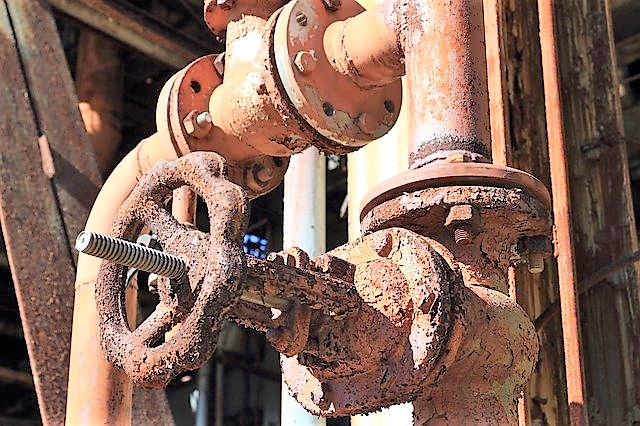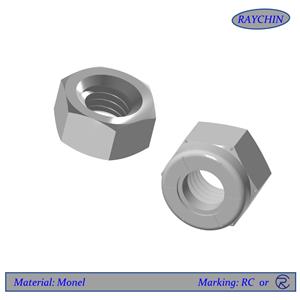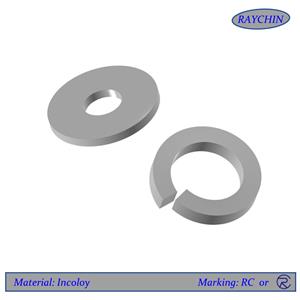When nickel, titanium or zirconium alloys are not enough...

Immune to numerous acids and chemicals (corrosion tables)
Better corrosion resistance than nickel alloys, titanium or zirconium
High strength and stiffness in vacuum and inert gas up to 2000°C (3600°F)
Can become brittle when used in oxygen above 300°C
High purity and biocompatibilty
Physical Properties
Tantalum's Chemistry Grades & Specs
Datasheet for tantalum
Tantalum fasteners are best known for its unmatched corrosion resistance and chemical inertness. Tantalum fasteners have a similar corrosion resistance to that of glass, but all of the typical mechanical and electrical properties of a metal.
Tantalum fasteners are also extremely stable at high temperatures, since tantalum has a melting point around 3000°C. High temperature applications require vaccum or inert gas since tantalum may embrittle when used in oxygen rich environments above 250°C. Tantalum fasteners are also one of the most bio-compatible metals available and is also radio-opaque due to its high density (16.68 g/cm3).
All tantalum fasteners are available in commercially pure tantalum and tantalum 2.5% tungsten (Ta-2.5%W).
Contact us to see if your required tantalum fasteners are in stock and how our engineers may help you with your tantalum fasteners application.
Resources: Tantalum Torque Spec
Tantalum Fastener Types: Bolts, Nuts, Screws, Threaded Rods, Washers
Tantalum Grades, Chemistry & Specifications
Tantalum (Commercially Pure)
Commercially pure tantalum metal 99.95% pure tantalum as a minimum and has the best corrosion resistant properties of any metal when it come to most acids. While its corrosion resistance is exceptional, it is relatively soft and mechanically similar in strength to copper.
Specifications: UNS R05200
Tantalum (CP) | Ta | Nb | W | Mo | O | Ti | Ni | Fe | N | C | Si | H |
Max% | >99.95 | 0.100 | 0.050 | 0.020 | 0.015 | 0.010 | 0.010 | 0.010 | 0.010 | 0.010 | 0.010 | 0.010 |
Tantalum 2.5% Tungsten (Ta-2.5W)
This grade of tantalum alloyed with 2.5% tungsten provided better overall strength while maintaining its exception corrosion resistant properties. For tantalum fastener applications this is usually preferred.
Specifications: UNS R05252
Tantalum 2.5%W | Ta | W | Nb | Mo | O | Ti | Ni | Fe | N | C | Si | H |
Typical% | Bal | 2.5 | 0.50 | 0.020 | 0.015 | 0.010 | 0.010 | 0.010 | 0.010 | 0.010 | 0.005 | 0.002 |
Physical Properties
Density 16.6 g/cc
Melting Point 3290 K, 2996°C, 5462°F
Boiling Point 5731 K, 6100°C, 9856°F
Coefficient of Thermal Expansion (20°C) 6.5 x 10(-6) / °C
Electrical Resistivity (20°C) 13.5 microhms-cm
Electrical Conductivity 13% IACS
Specific Heat .036 cal/g/°C
Thermal Conductivity .13 cal/cm(2)/cm°C/sec
Tantalum Tensile Data
TANTALUM - Tensile Data
Temperature (°F) | Ultimate Tensile (ksi) | Yield Strength at 0.2% Offset (ksi) | Elongation % |
Room Temp. | 40.0 | 25.0 | 50.0 |
200 | 29.0 | 22.0 | |
400 | 28.0 | 12.0 | |
600 | 28.0 | 8.0 | |
800 | 27.0 | 2.5 |
TANTALUM 2.5% W - Tensile Data
Temperature (°F) | Ultimate Tensile (ksi) | Yield Strength at 0.2% Offset (ksi) | Elongation % |
Room Temp. | 50.0 | 35.0 | 25.0 |
200 | 48.0 | 30.0 | 15.0 |
400 | 42.0 | 27.4 | 10.0 |
485 | 40.0 | 25.5 | 10.0 |
Tantalum Corrosion Resistance Table
TANTALUM SHOWS A NIL CORROSION RATE TO THE FOLLOWING MEDIAFor all temperatures up to at least 302°F (150°C) unless otherwise indicated | |||
Acetic acid | Chlorine, dry, <250°C (480°F) | Maleic acid | Potassium sulfate |
TANTALUM SHOWS LIMITED CORROSION RESISTANCE TO THE FOLLOWING MEDIA | |||
Air,>300°C (570°F) | Hydrogen, >300°C (570°F)Hydrogen fluoride | Potassium hydroxide, conc. | Sodium hydroxide, conc. |




